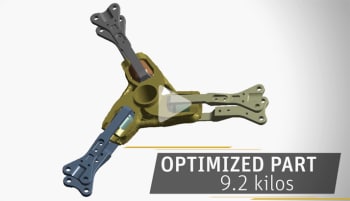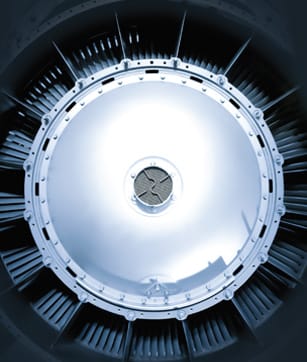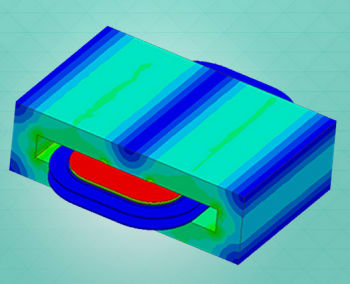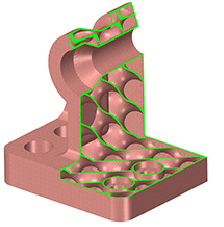
Engineers can now perform simulations faster and easier with the latest ANSYS 18.1 release. This release expands and enhances the software’s capabilities to support more complex simulations, enable simulation earlier in the design cycle, reduce the number of development cycles, and reduce time to market.
ANSYS 18.1 improves the capability of current tools and adds new features and capabilities.
Key enhancements and additions include:
Topology Optimization
Engineers can analyze complex materials and better optimize designs with this release, resulting in improved design for manufacturability (DFA). Load cases from both modal and static structural analysis can be combined to verify that designs meet frequency and structural specifications. Constraints can be optimized to provide better control over manufacturing constraints to simplify and improve manufacturing processes.

Computational Fluid Dynamics
Engineers can more accurately simulate computational fluid dynamics (CFD) with this release. Users can analyze a wider range of designs with the added support for fluid simulations through porous media such as filters, transient flows, non-Newtonian fluid viscosity and fluid momentum.
Performance improvements enable simulation earlier in the project, reducing costly product design iterations and accelerating product design.
Engineers can analyze turbomachinery blades as a full-wheel solution using Harmonic analysis, avoiding the need to individually and separately analyze each blade in every row. Users achieve speedups of up to 100 times while the computational capacity requirements are reduced, allowing accurate full simulations and avoiding the approximations typically required to analyze a real-world design within a reasonable time frame.
Users can better share and communicate simulation results with customers and coworkers thanks to an enhanced visualization capability. High resolution images and animations provide a more realistic visualization of both product design and operation.

Electromagnetic Analysis
Users can improve motor designs such as those used in hybrid vehicles with noise-vibration-harshness (NVH) analysis enhancements. Modeling both magnetostriction and induced magnetostriction effects can improve simulation accuracy.
Engineers can analyze antenna design and placement with a new characteristic mode analysis solver. This tool accurately predicts fundamental resonance characteristics and allows analysis of antenna location for smaller and miniaturized devices such as Internet of Things (IoT) devices and smartwatches.

Additive Manufacturing
Engineers can design and model three-dimensional structures that were previously too complex to practically model. Users can choose from 15 lattice shapes and then specify structure spacing and size to generate 3D lattice structures inside any faceted model. These enhanced infill structures result in stronger components with reduced weight and material requirements.
Engineers can reuse any 3D model with geometric scripts. User-written scripts streamline the design and simulation process and enable more efficient design iterations. Scripts can be executed on multiple designs and can also be customized to each design. Revised designs can be quickly resimulated with the same scripts to help ensure consistent testing and validation.
The new release is available now, and current ANSYS customers can download ANSYS 18.1 from the Download Center. For more information about this release and other ANSYS products, visit the ANSYS website.
